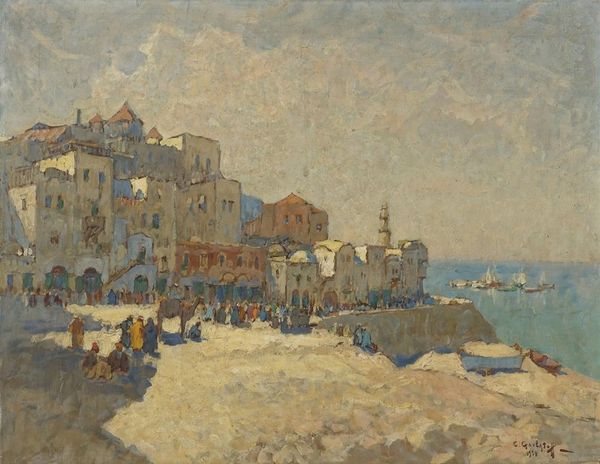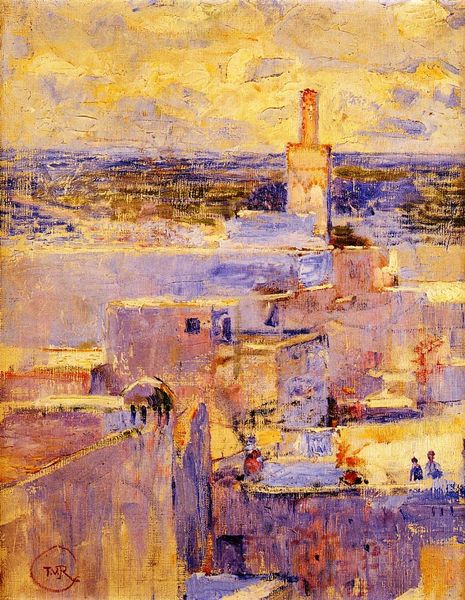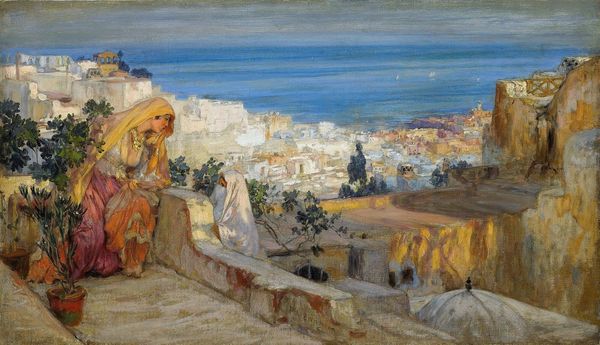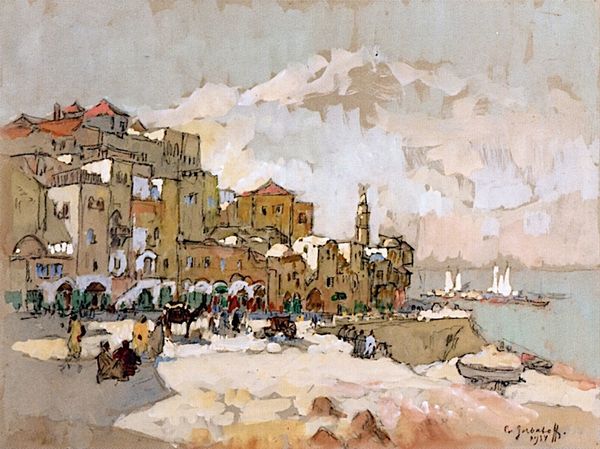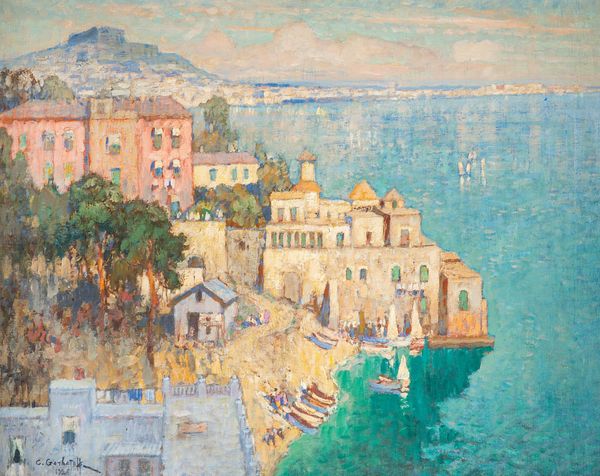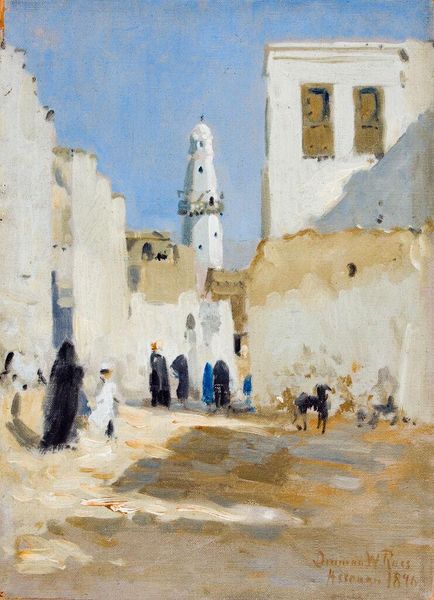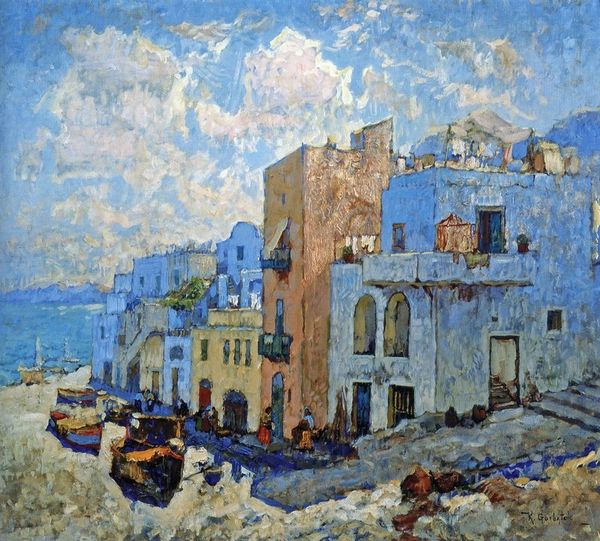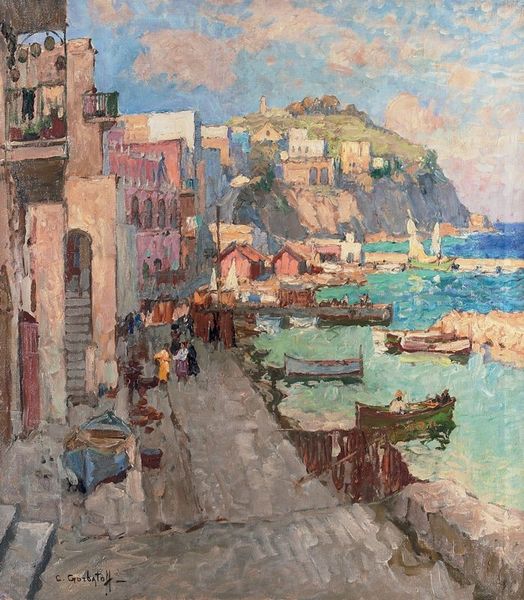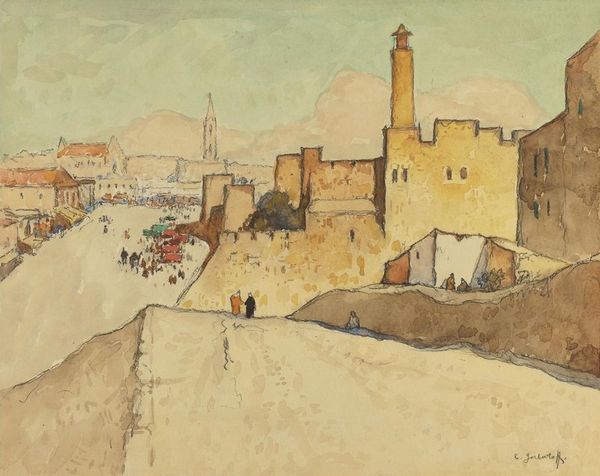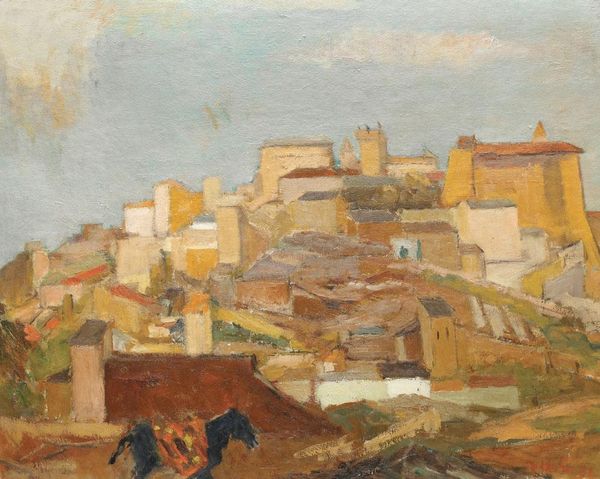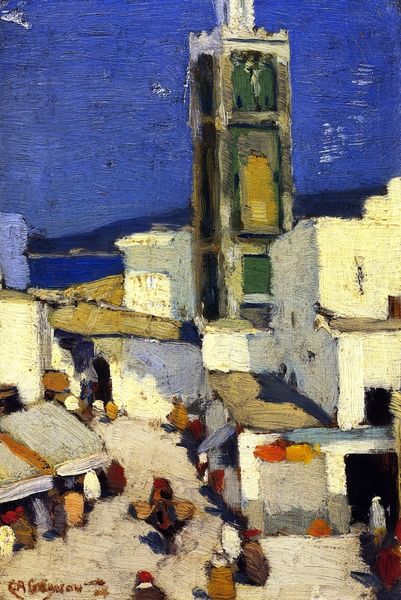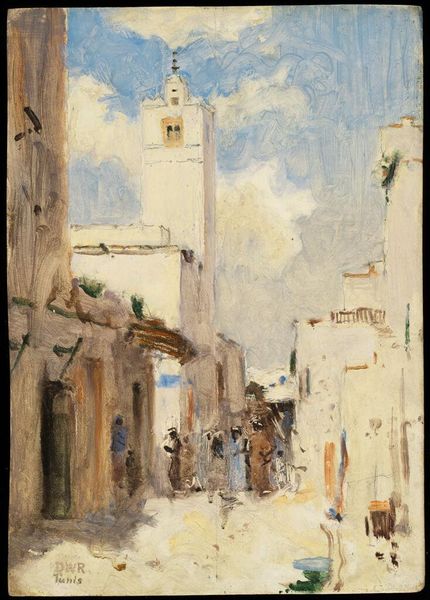
Copyright: Public domain
Curator: Konstantin Gorbatov's "The Blue Sea, Capri," painted in 1925, offers a window into a sun-drenched cityscape, all rendered in vibrant oil paints. What's your initial reaction? Editor: My first thought? Escapism. It’s a visual exhale. The bright whites and blues almost feel like you could step right into the scene and be greeted by a warm, salty breeze. Curator: There’s definitely a serenity to it. But, of course, that tranquility is built upon a specific social reality. Capri in the 1920s was a playground for the European elite. We’re looking at a curated version of leisure and privilege, painted at a moment of rising social tension throughout Europe. Editor: I suppose. For me though, the real star is the light. Gorbatov captures it so well with these little dabs of colour, shimmering on the white buildings, reflecting off that unbelievably blue sea... It’s a masterclass in capturing atmosphere, a sensory feast! Curator: Indeed. The post-Impressionist brushwork is undeniable, yet also somewhat… safe? There's a clear sense of order, of controlled composition. Are we perhaps overlooking the ways in which this picturesque view obscures the labour and inequalities that enabled such idyllic scenes? Editor: But does that negate the simple pleasure one can find in its beauty? Can’t art just…be? Sometimes a landscape is just a landscape, an escape from those very social realities you’re talking about. Curator: Maybe. But even an ‘escape’ serves a purpose. It tells us what we're yearning for, what we’re lacking in our daily lives, perhaps highlighting the inherent power dynamics. Editor: So, a yearning painted in blissful shades of blue… a window not just onto a beautiful view, but a complex societal landscape? I love that idea. It gives it an interesting tension, a new layer to discover. Curator: Exactly! Ultimately, it encourages us to look a little deeper, to ask more questions of the image and the world around it. To understand what Capri—or any seemingly idyllic vista—represents in a broader cultural and historical sense.
Comments
No comments
Be the first to comment and join the conversation on the ultimate creative platform.
